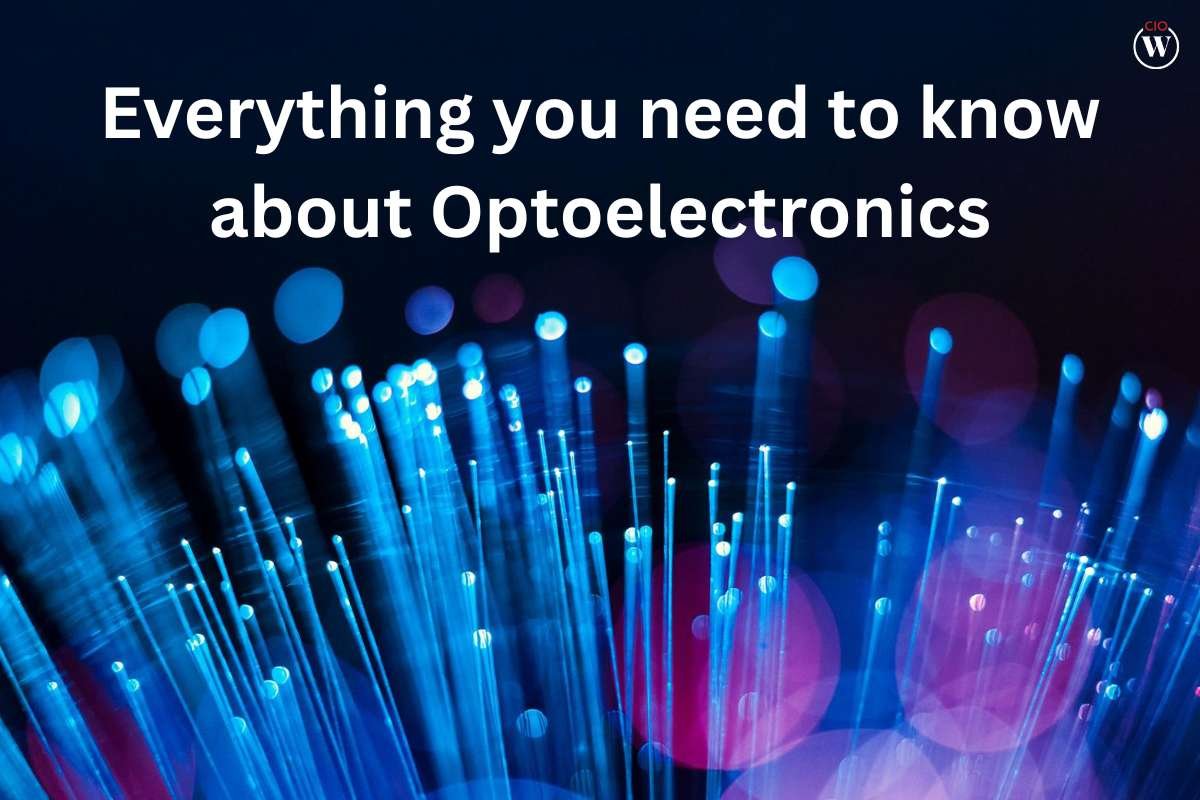Optoelectronics are the components that emit and detect light. These light-emitting devices use voltage combined with current to produce electromagnetic radiation. It is basically the research, production, and design of a hardware device that transforms electrical energy into light and light into energy by the use of semiconductors. To make this device, solid crystalline minerals are used which are heavier in weight than insulators, but lighter than metals. These devices use light via electricity. This technology is used by various sectors like military, telecommunication, medical equipment, and automatic access system controls.
Optoelectronics is gaining fast recognition recently. It helps in sourcing electronic devices, and detection and control of light. The field is vast, and hence the range of devices that fall under this category is vast.
Let’s have a look at Everything you need to know about Optoelectronics;
Applications of Optoelectronics
- Fiber Optic Communications:
One of the most prominent applications of optoelectronics is in fiber optic communications. Fiber optics enable high-speed data transmission over long distances using light signals. This technology has revolutionized telecommunications, allowing for faster internet speeds, clearer voice calls, and efficient data transfer.

- Medical Imaging and Diagnostics:
Optoelectronic devices play a vital role in medical imaging techniques such as endoscopy, microscopy, and laser surgeries. These devices provide accurate visualization and precise interventions, contributing to improved medical procedures and patient outcomes.
- Display Technology:
From smartphones to large-scale LED billboards, optoelectronics powers modern display technologies. Organic Light Emitting Diodes (OLEDs) and Liquid Crystal Displays (LCDs) deliver vibrant visuals with energy efficiency, influencing the way we consume media and information.
Photovoltaic cells, which convert sunlight into electricity, rely on optoelectronic principles. Solar panels are becoming increasingly affordable and efficient, promoting sustainable energy production and reducing dependence on fossil fuels.
- Sensing and Detection:
Optoelectronic sensors are integral to various industries, including automotive, aerospace, and environmental monitoring. They enable accurate measurement of parameters like temperature, pressure, and chemical composition, enhancing safety and efficiency.
- Biometric Security:
Optoelectronics facilitates biometric security systems such as facial recognition and iris scanning. These technologies are employed for access control, identity verification, and authentication in both personal and commercial settings.

- Data Storage:
Optical data storage techniques, like CDs, DVDs, and Blu-ray discs, utilize light to read and write data. Although newer technologies like solid-state drives have gained prominence, optical storage remains relevant for archiving purposes.
- Laser Technology:
Lasers are a prime example of these electronics, finding applications in diverse fields including manufacturing, entertainment, and scientific research. They enable precise cutting, engraving, medical treatments, and even artistic light shows.
Economic Significance of Optoelectronics
The integration of optoelectronics into various industries has resulted in substantial economic benefits. Some key contributions include:
- Job Creation:
This growth has led to the creation of jobs across sectors, including research and development, manufacturing, sales, and technical support. Skilled professionals are in demand to design, produce, and maintain optoelectronic devices.
- Increased Productivity:
Industries that incorporate optoelectronic technologies experience enhanced productivity due to faster data transfer, improved imaging, and more efficient processes. This translates into better efficiency and resource utilization.
- Innovation and Competitiveness:
Companies investing in optoelectronic research and development stay at the forefront of innovation. By developing cutting-edge products, businesses can maintain a competitive edge in the market.
- Revenue Generation:
Optoelectronics has become a lucrative industry, generating significant revenue for companies involved in manufacturing devices such as lasers, sensors, and display technologies.
- Energy Efficiency:
Optoelectronic devices often boast energy-efficient features, leading to reduced energy consumption and costs for both consumers and businesses.
Benefits of Optoelectronics for Military Services
The benefits of optoelectronics extend beyond civilian applications, making a profound impact on military operations and decision-making processes.
- Enhanced Surveillance:

Optoelectronic sensors and imaging technologies enable military personnel to conduct surveillance and reconnaissance with heightened precision. These tools provide critical intelligence for strategic planning and tactical execution.
- Secure Communication:
Optoelectronic communication systems offer secure channels for military communication. Fiber optic networks are difficult to intercept, providing a level of encryption that enhances information security.
- Precision Guided Weapons:
Optoelectronics plays a pivotal role in the development of precision-guided weapons systems. Laser guidance and target designation improve accuracy while minimizing collateral damage.
- Night Vision and Imaging:
Optoelectronic devices like night vision goggles and thermal imaging cameras empower soldiers with the ability to operate effectively in low-light or nighttime conditions, enhancing situational awareness and reducing risks.
- Decision Support Systems:
Optoelectronics contributes to the development of advanced decision support systems. Real-time data visualization, accurate imaging, and remote sensing capabilities assist military commanders in making informed decisions on the battlefield.
- Countermeasures and Defense:
Optoelectronic technologies aid in the development of countermeasures against threats such as lasers and guided munitions. These defensive systems enhance military capabilities and protect personnel.
Conclusion
Optoelectronics, a multidisciplinary field combining optics and electronics, has evolved into a powerhouse of innovation with diverse applications. Its impact ranges from revolutionizing communication and healthcare to bolstering military capabilities. The economic benefits of optoelectronics are far-reaching, spurring job creation, fostering innovation, and contributing to revenue generation.
In the military domain, optoelectronics equips armed forces with advanced surveillance tools, secure communication channels, and decision support systems that are pivotal in modern warfare scenarios. As we continue to harness the potential of optoelectronics, we illuminate a path toward a more connected, efficient, and secure future for both civilian and military endeavors.









